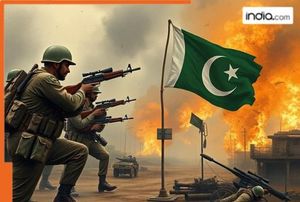On Thursday, May 8, 2025, North Korea launched several short-range ballistic missiles from its east coast, marking a significant escalation in tensions in the region. The South Korean military reported the firings occurred around 08:10 AM local time (23:10 GMT on Wednesday, May 7, 2025). This incident, the first of its kind in nearly two months, comes amid ongoing military exercises conducted by South Korea and the United States, which North Korea often perceives as provocations.
According to a statement from the South Korean Joint Chiefs of Staff (JCS), the missiles were launched from Wonsan and were potentially equipped with KN-25 and KN-23 systems. These missiles traveled up to 800 kilometers before landing in the Sea of Japan. The JCS spokesman, Colonel Lee Sung-jun, suggested that the launches might have been intended to assess the flight stability and functionality of the missiles for potential export purposes, possibly to Russia.
The Japanese government confirmed detecting a ballistic missile firing with an irregular trajectory, further highlighting the growing concerns among neighboring countries regarding North Korea's military capabilities. In response to the missile launches, South Korea condemned the actions, labeling them as provocations and reaffirming its readiness to respond decisively to any further threats from the North.
This missile test is notable as it follows North Korea's recent admission of sending thousands of soldiers to support Russia in its ongoing conflict with Ukraine. The timing of the missile launch coincides with heightened tensions stemming from joint military drills conducted by South Korea and the United States, which North Korea has vehemently opposed.
Historically, missile tests by North Korea have often been a means to demonstrate military strength, especially when diplomatic relations are strained. This latest test is the fourth ballistic missile test conducted by North Korea this year, and it underscores the persistent volatility in inter-Korean relations.
North Korea's last missile test occurred on March 10, 2025, during a similar period of military exercises by South Korea and the United States. The ongoing sanctions imposed by the United Nations against North Korea for its nuclear program restrict its ability to develop ballistic missiles, which typically travel outside the atmosphere.
On April 28, 2025, the North Korean navy unveiled a new destroyer named the 'Choe Hyon,' which is scheduled to enter service in early 2026. During this unveiling, test firings of cruise missiles were reported by the official Korean Central News Agency (KCNA). Following this event, North Korean leader Kim Jong-un ordered an acceleration of the navy's nuclear armament to defend the state and its maritime sovereignty against current and future threats.
The deteriorating relations between Pyongyang and Seoul are evident, with North Korea officially renouncing any hopes of reunification last year. The two Koreas remain technically at war, as the conflict that began in 1950 ended with an armistice rather than a formal peace treaty.
Analysts suggest that North Korea's missile tests serve multiple purposes: they not only assert military capability but also send a message to both domestic and international audiences regarding the regime's strength and resolve. As tensions continue to escalate, the international community watches closely, aware that North Korea's military actions could have broader implications for regional stability.
The response from South Korea, the United States, and Japan remains vigilant, with ongoing discussions to share intelligence and coordinate responses to North Korea's provocations. The evolving situation underscores the complexities of diplomacy in the region, where military posturing and rhetoric often dominate the narrative.
As North Korea continues to develop its military capabilities, the potential for conflict remains a pressing concern for neighboring countries and the international community. The recent missile firings are a stark reminder of the fragile balance of power in the region and the ongoing challenges in achieving lasting peace on the Korean Peninsula.




